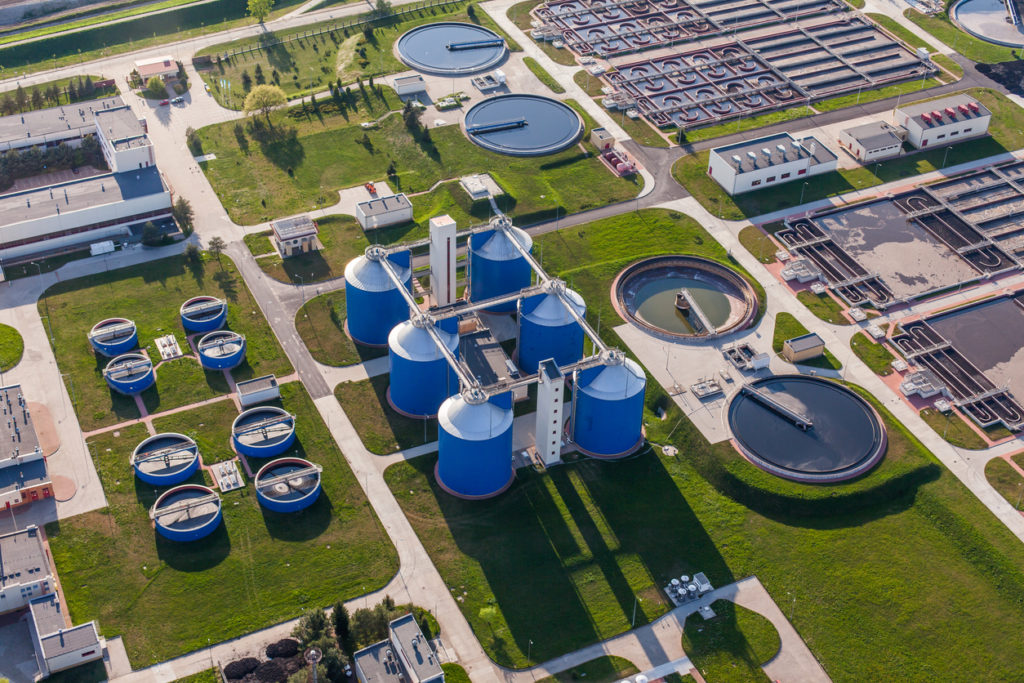What Are Biofiltration Vapor Treatment Systems and How Do They Work?

If your industrial or municipal facility generates volatile, odorous vapor waste, biological treatment might be an appropriate choice for your facility. These systems can be efficient and economical technologies for breaking down and removing organic contaminants from contaminated vapor such as those produced in the food and beverage, chemical manufacturing, oil and gas, and municipal industries.
But “what is a biofiltration vapor treatment system and how does it work?”
This article will break down the basics of some of the more familiar concepts as an overall, high-level introduction to these systems.
What are biofiltration vapor treatment systems?
Biofiltration vapor treatment systems use a naturally occurring process to break down and consume unwanted contaminants, which can be especially useful for volatile organic compounds (VOCs)—especially for the biodegradable vapors that cause a need for odor control.
Useful applications include managing the level of these odor-causing industrial contaminants:
- hydrogen sulfide
- ammonia
- mercaptans
- amines
- volatile fatty acids (VFAs)
- volatile aldehydes and ketones
Biofiltration systems can treat wastewaters, but they’re also used to biodegrade compounds in vapor or gas phases, which we’ll focus on here.
How do biofiltration vapor treatment systems work?
There are many different types of bioreactors that will treat vapor phase odors, but we’ll focus on three main processes: biofilters, biotrickling filters, and bioscrubbers.
All three of these bioreactors have four things in common:
- a solid-phase packing media inside
- a gas-phase vapor that carries the pollutants
- a liquid-phase nutrient for the bacteria that provides them with vitamins and trace nutrients they need to grow
- bacteria that do the work
In each of these systems, you need to bring all four of these elements together effectively in a controlled environment to efficiently remove these odor-causing compounds.
Let’s look at each one individually:
Biofilters for vapor treatment
In this type of bioreactor, water is used minimally, and the bed remains nearly dry. The system uses a humidifier push the contaminated gas vapors into the filter bed chamber where clean water is sprayed onto it, achieving 100% humidity. The water vapor then goes along with the gas-phase vapors down into a bed of organic media like wood chips, straw, hay, or bark—which is typically piled about three to four feet high—where the organic media acts like a composting pile, breaking down and biodegrading over time alongside the odor-causing compounds. This type of reactor is often used by facilities in the pulp and paper industry where they can use all the leftover wood chips and sawdust from their processing to fill the bioreactor and act as the organic media.
Biotrickling filters for vapor treatment
Biotrickling filters, as opposed to conventional biofilters, tend to be a more engineered and efficient solution for treating vapor-phase contamination. Here, the packing media is not organic but synthetic media like polypropylene and polyurethane media that is highly porous, giving the bacteria plenty of surface area to cling to and proliferate among. In these systems, you are continuously irrigating the packed bed with the liquid collecting at the very bottom where it’s either purged or recycled. The packed bed media is filled with the gas-phase vapor, and when the water trickles down, the contaminated gas comes up through the media, and treated gas comes up and out of the system. These systems are tall and narrow with much higher organic loading rates and biomass concentrations than other methods.
Bioscrubbers for vapor treatment
Bioscrubbers are chemical scrubbers with a separate bioreactor. The scrubbing tower, like any chemical scrubber, is usually packed with little plastic rings, and the vapors come in the bottom and flow up through the tower while water sprays all the packing media and all the gases come in contact with each other. The chemical vapors transfer into the liquid water and drain out of the scrubber into an oxidation reactor with aerobic suspended growth bacteria. In short, you’re rinsing out the contaminants from the gas then treating the contaminated water in a two-step process.
Can SAMCO help?
SAMCO has over 40 years’ experience custom-designing and manufacturing wastewater treatment systems, so please feel free to reach out to us with your questions. For more information or to get in touch, contact us here. You can also visit our website to set up a call with an engineer or request a quote. We can walk you through the steps for developing the proper solution and realistic costs for your biological wastewater treatment system needs.
